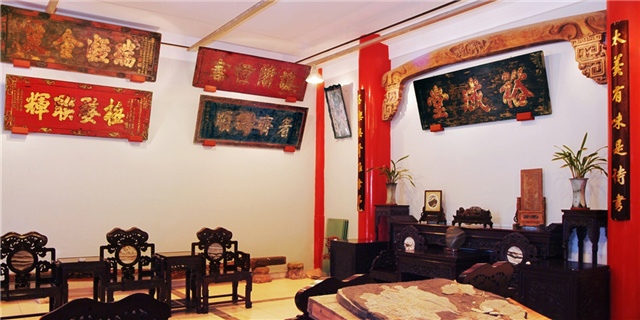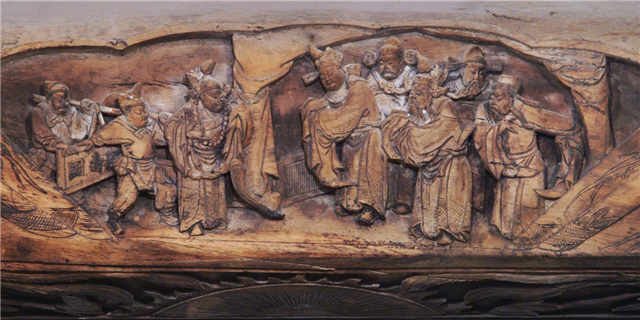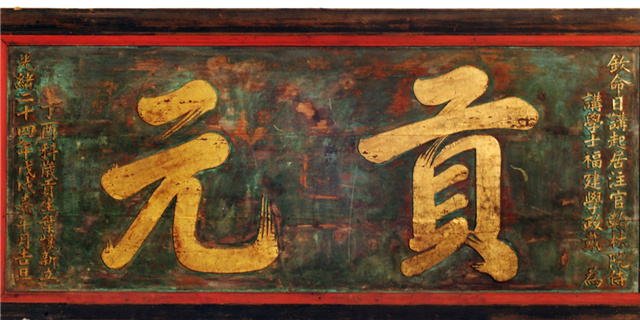Plaque Custom
A plaque is a flat piece of wood with large-sized characters on it which is fixed above the door lintel of any palace, hall, pavilion, study, store, etc. Through long time of use, certain conventions and expression forms have taken shape, and plaque has become a custom with Chinese characteristics shared by emperors and common people and by Han nationality and ethnic minorities, existing in both mainland China and Taiwan. In 2007, plaque custom was listed by Shanghai Municipal Government in the list of the first batch of City-level Intangible Cultural Heritage in Shanghai. The history of plaque can be traced back to the Qin and Han Dynasties, and plaques became widely used during the Ming and Qing Dynasties. Just as people said, “Where there is a well, there is a plaque”. It was because plaques were ingenious and full of wisdom of life that they became a popular custom. In old times, plaques were hung conventionally on occasions such as completion of new halls, consecration in temples, distinguished villagers passing the provincial civil service examination, birthday celebration of the elderly, eulogization of heroes and heroines, and congratulations. Plaques could be seen everywhere, such as stately palaces, busy marketplaces, solemn ancestral halls and casual studies. The plaque custom has been kept so far. There are representative signboard plaques of old and famous shops, nameplate plaques forming a delightful contrast with scenery in parks and gardens, aphorism plaques for self-encouragement in studies, etc. Especially in rural areas there are various happiness plaques made by peasants to praise life. It is visible that plaques have already been a part of people’s life, and become a paradigm of life.




